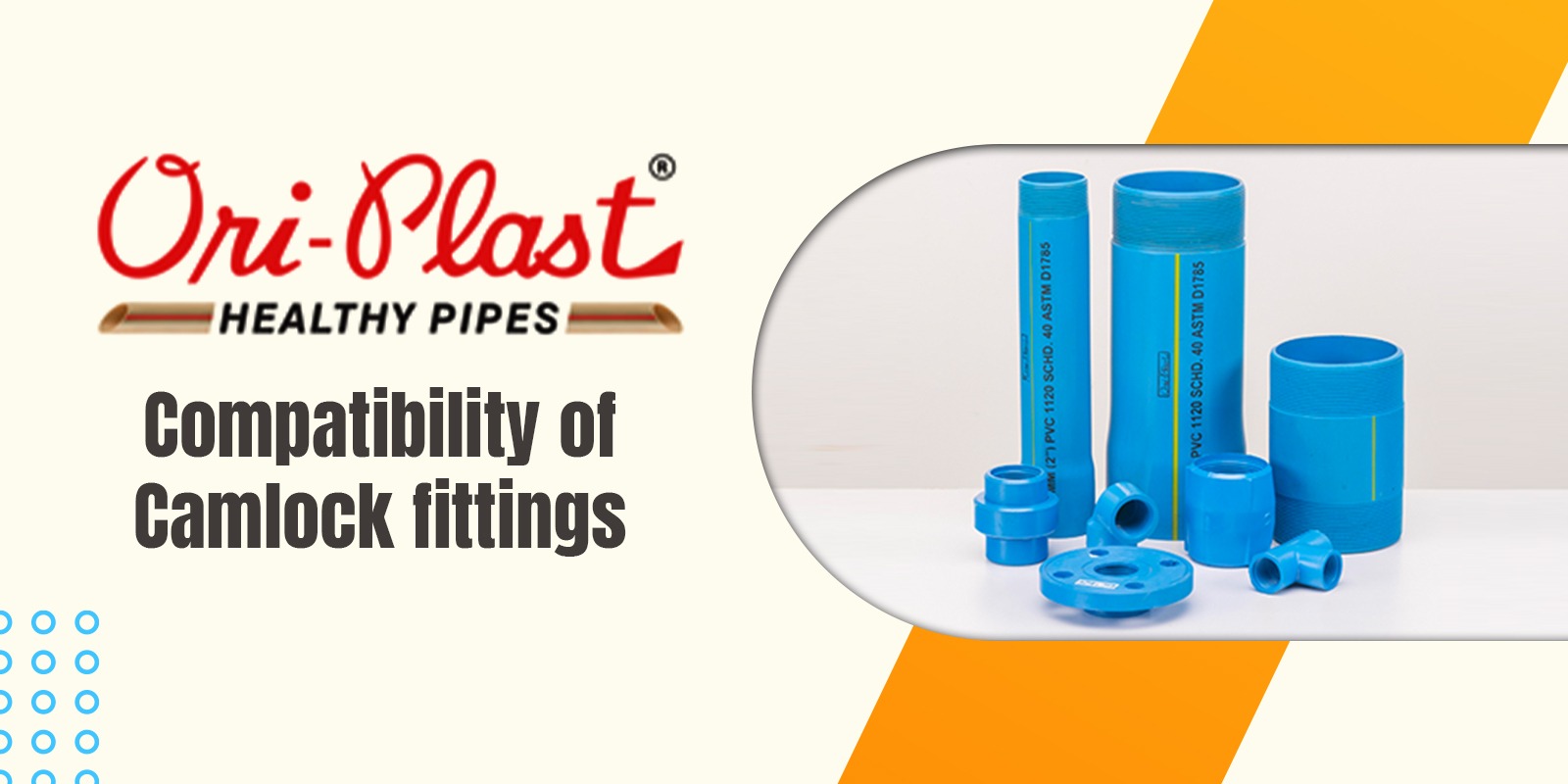Camlock fittings are widely used in various industries to connect pipes or hoses together quickly and easily. These fittings are available in various materials, sizes, and types, making them compatible with a wide range of pipes and hoses. However, it is essential to ensure that the camlock fittings is compatible with the type of pipe being used to prevent leaks, spills, and other hazards.
In this article, we will discuss the compatibility of camlock fittings with different types of pipes. We will cover the types of camlock fittings and pipes available in the market, the factors that affect their compatibility, and how to choose the right camlock fitting for your application.
Types of Camlock Fittings
Camlock fittings, also known as cam and groove fittings, consisting of two parts, the male adapter, and the female coupler, that connect together by inserting and twisting the male adapter into the female coupler. These fittings are available in various types based on the material, size, and locking mechanism.
Materials:
Camlock fittings are available in different materials such as stainless steel, brass, aluminum, and polypropylene. Each material has its advantages and disadvantages, such as corrosion resistance, chemical compatibility, and temperature tolerance.
Sizes:
Camlock fittings are available in different sizes ranging from ½ inch to 6 inches or more. The size of the fitting depends on the diameter of the pipe or hose it will connect to.
Locking mechanism: Camlock fittings are available in two locking mechanisms, which are the standard cam and groove locking and the locking arm or safety locking. The locking mechanism is essential to prevent accidental disconnection of the fitting and ensure a secure connection.
Types of Pipes:
Pipes are available in various materials and sizes, each with its advantages and disadvantages, such as chemical compatibility, temperature tolerance, and pressure rating. The most common types of pipes used in industries are:
- PVC pipes: Polyvinyl chloride (PVC) pipes are lightweight, easy to install, and resistant to corrosion and chemicals. They are widely used in water supply, drainage, and irrigation systems.
- Stainless steel pipes: Stainless steel pipes are durable, corrosion-resistant, and suitable for high-temperature and high-pressure applications. They are commonly used in chemical, pharmaceutical, and food processing industries.
- Aluminum pipes: Aluminum pipes are lightweight, easy to handle, and suitable for low-pressure applications. They are commonly used in air conditioning, ventilation, and heating systems.
- Carbon steel pipes: Carbon steel pipes are strong, durable, and suitable for high-pressure applications. They are widely used in oil and gas, petrochemical, and power generation industries.
Factors affecting the compatibility of Camlock fittings with Pipes
The compatibility of camlock fittings with pipes depends on various factors such as the material, size, and locking mechanism of the fitting, the material, size, and pressure rating of the pipe, and the type of fluid being transported.
Here are some of the factors that affect the compatibility of camlock fittings with pipes:
Material compatibility: Camlock fittings and pipes must be made of compatible materials to prevent chemical reactions, corrosion, and contamination. For example, stainless steel camlock fittings should not be used with aluminum pipes, as they can cause galvanic corrosion.
Size compatibility: Camlock fittings must match the size of the pipe or hose to ensure a secure and leak-free connection. Using a smaller or larger fitting can cause leakage, spills, or damage to the equipment.
Pressure rating compatibility:
Camlock fittings and pipes must be rated for the same pressure to prevent leaks and equipment damage. Using a fitting with a lower pressure rating than the pipe can cause it to burst or fail while using a fitting with a higher pressure rating than the pipe can damage the pipe or equipment.
Fluid compatibility:
Camlock fittings and pipes must be compatible with the fluid being transported. Some fluids can cause chemical reactions, corrosion, or contamination, which can affect the performance of the fitting and the pipe.
Temperature Compatibility:
Camlock fittings and pipes must be compatible with the temperature of the fluid being transported. Some materials can expand or contract under extreme temperatures, causing leakage, damage, or failure of the equipment.
How to choose the right Camlock fitting for your application
To choose the right camlock fitting for your application, you must consider the following factors:
- Material compatibility: Choose a camlock fitting made of the same material as the pipe or hose being used.
- Size compatibility: Choose a camlock fitting that matches the size of the pipe or hose being used.
- Pressure rating compatibility: Choose a camlock fitting and pipe with the same pressure rating.
- Fluid compatibility: Choose a camlock fitting and pipe that are compatible with the fluid being transported.
- Temperature Compatibility: Choose a camlock fitting and pipe that can withstand the temperature of the fluid being transported.
Conclusion
Oriplast Camlock fittings are versatile and easy-to-use connectors that are widely used in various industries. The compatibility of camlock fittings with pipes depends on various factors such as material, size, pressure rating, fluid, and temperature compatibility. By considering these factors, you can choose the right camlock fitting for your application and ensure a secure and leak-free connection.
Check out our Facebook Page Oriplast for more information

